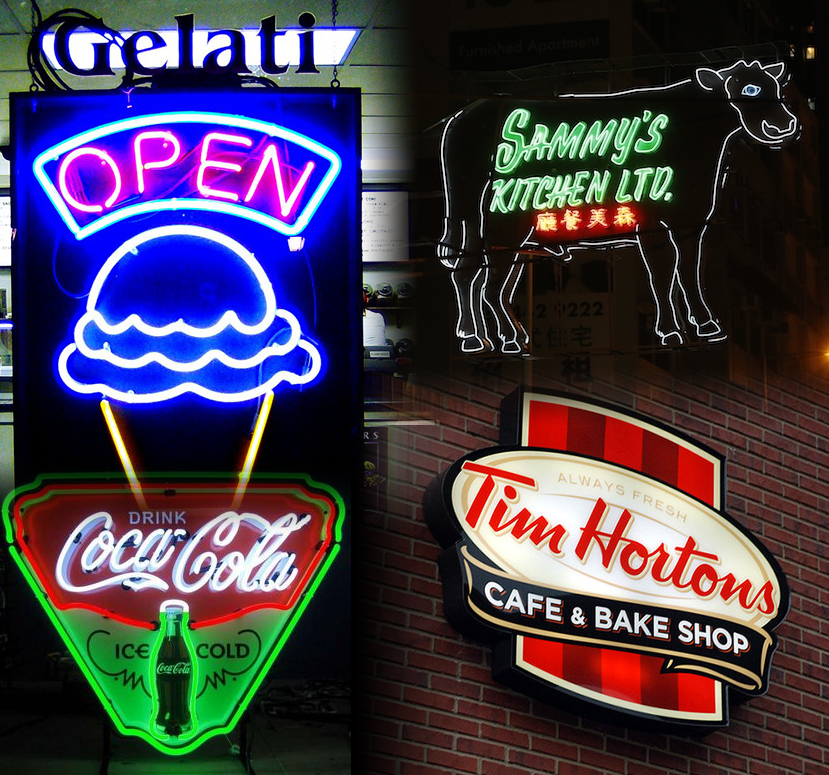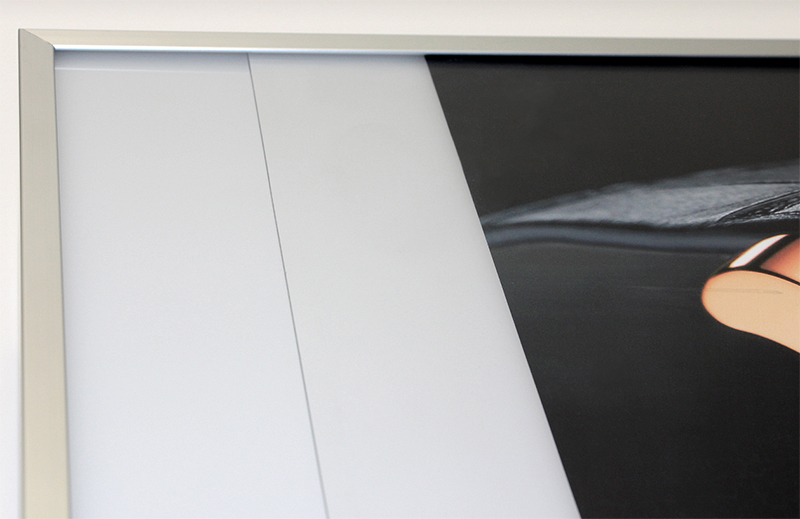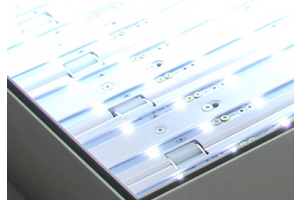What is the difference between an electric sign and a 'lightbox'?
Just by the names, you can see why there’s some identity confusion between the two products: (a) Electric Signs – or more definitively, “electrically-lighted signboxes”; and (b) Lightboxes for backlit graphic display.
Customers shopping for one or the other often interchange these phrases and similar, when referring to a related product. So the question is, is there really a difference between an electric sign and a lightbox — and if so, what is it?
The term ‘electric sign’ has been in use since at least the early 20th century, when roadside commercial signs powered by filament-electric lamps began to appear. And pragmatically, any product that can be categorized as a ‘sign’ — as long as it is powered by electricity — can be thought of as an electric sign.

Alternatively, the term ‘lightbox’ came into common use about the middle of the 20th century, as lighted cabinets that hold and display a sheet of backlit graphic film began to appear in commercial and retail environments.
Therein lies the defining difference between a an electric sign, generally — and a lightbox, specifically:
A lightbox is an electrically-lighted sign that contains the mechanism(s) to encapsulate, suspend, protect and display a discrete sheet of backlit film which embodies a print image, and which is designed to transmit light through the film for increased image brightness, contrast and color saturation.
So technically, the electric signs category is by definition a superset of fixtures that includes lightboxes as just one type. But in practice in the signage industry, the phrase ‘electric signs’ is often intended to exclude the subset of ‘lightboxes’, simply by describing any electric sign that does not fit the narrower ‘lightbox’ definition.
The reason for this exclusion in practice is simply a matter of convenience: Lightboxes have so many attributes that distinguish them from other electric signs, separating the two aids in clarification. What distinguishes a lightbox from other electric signs? Here’s a list of the main differentiators:
- GRAPHIC UPDATING — Lightboxes are usually designed for frequent replacement of the graphic (such as a monthly or seasonal promotional message), so they provide a quick method for opening and accessing the graphic without tools. Conversely, (non-lightbox) electric signs are usually designed for long-term or permanent display of a graphic (such as the name of a store), so they don’t need such easy access to the graphic.
- MATERIAL — Lightboxes are usually built of extruded aluminum, whereas electric signs are often constructed of steel, wood or plastic. Aluminum is generally considered to be more ‘upscale’ in both rigidity and elegance, but other materials are often more economical. The economy of steel, for example, is especially relevant because electric signs are often much larger than lightboxes, for building-mounted and highway signage that’s intended for viewing from greater distances. One might think rigidity should be more important at larger sizes, but (a) there are other more economical ways to strengthen jumbo signs besides switching base materials; and (b) rigidity is more critical for lightbox frames due to the unique, moving mechanisms they contain (see #3 below).
- GRAPHIC SECURITY — Lightboxes usually sandwich the backlit film loosely (without glue) between two lenses so that it can be removed without wasting a lens, when the image needs to be updated. This is achieved via some combination of flip edges, slide frames, snap frames and/or hinged doors. Electric signs usually contain only one translucent lens layer, for the sake of simplicity, longevity, and also to decrease the need to manage moisture condensation. Most electric signs do not use a backlit film for their artwork, but they can — and if they do — the printed film must be glued to the lens, which renders the lens also wasted whenever the image needs to be replaced.
- VIEWING DISTANCE — Lightboxes are more often intended for close-up viewing than electric signs; hence the basis for improved elegance.
- SIMPLICITY — Lightboxes are almost always rectangular and generic in terms of any artwork or message or branding. This enables mass production, and puts downward pressure on unit cost. All the ‘customization’ of a particular lightbox application is fully executed at the graphic film level, by simply replacing one printed film with another. Electric signs are often custom-shaped, die-cut and/or fitted with custom-designed features that aid in the communication of the particular message or brand, such as a sign frame shaped to the letters that spell out the name of a store.

| Electric Signs | lightboxes | |
|---|---|---|
| definition | any powered sign | for backlit film only |
| frame construction | any materials | usually aluminum |
| shape | custom, organic | rectangular |
| graphics are changed | rarely/never | frequently |
| viewing distance | long distance/street traffic | up close / pedestrian |
So, probably the main determining factor in choosing an electric sign vs. a lightbox should be — how often will the graphic be updated? If the graphic is intended to be changed every once in awhile (or more often), then consider a lightbox for convenience. Also — generally but not always, shorter-term graphics are smaller size and also intended for a shorter viewing distance than long-term graphics — these are two more reasons to choose an aluminum lightbox over a steel electric sign.








